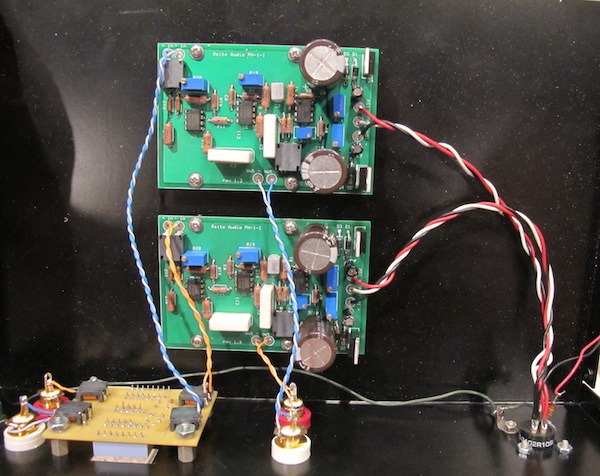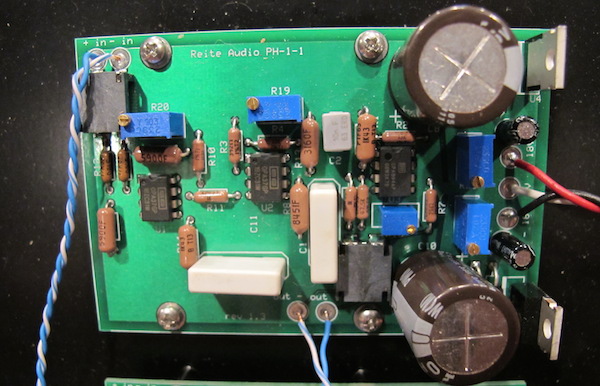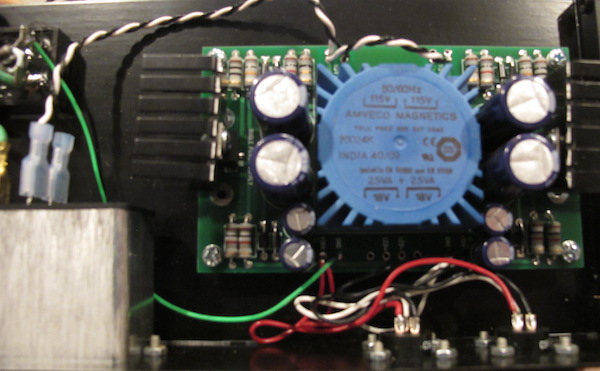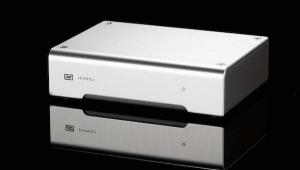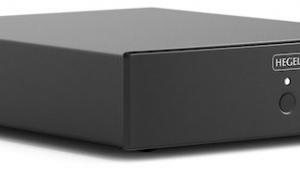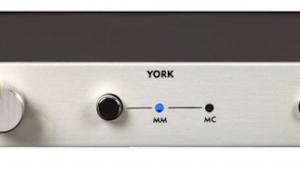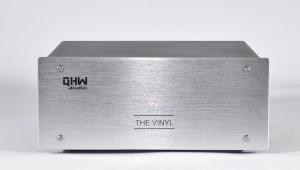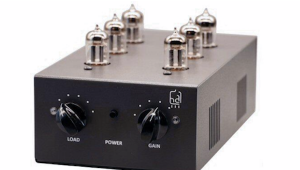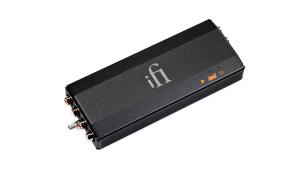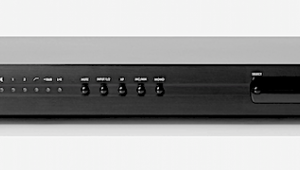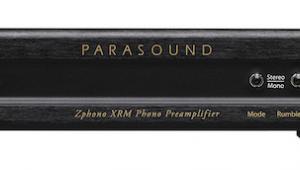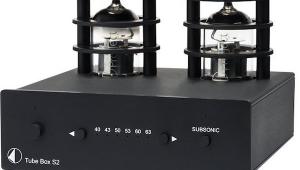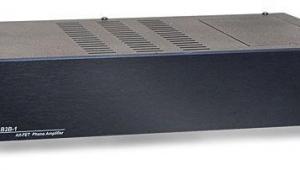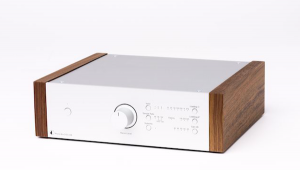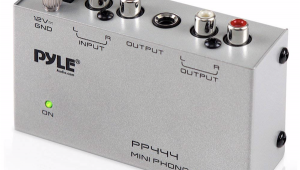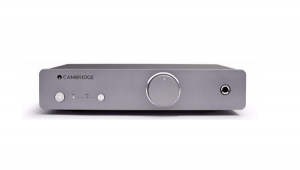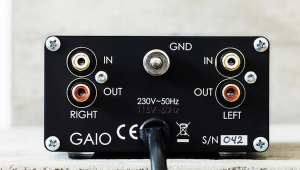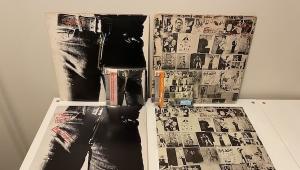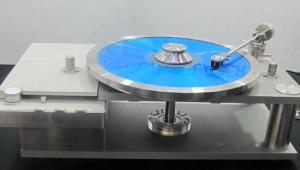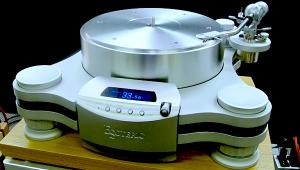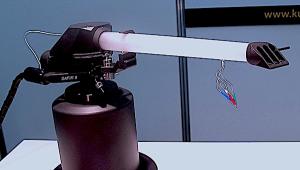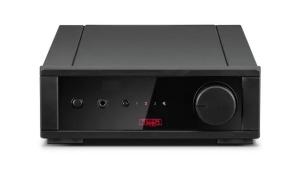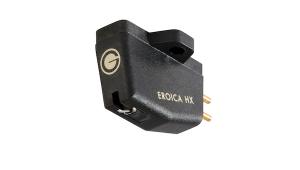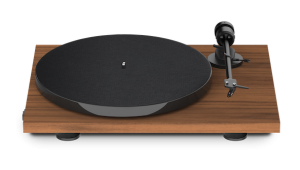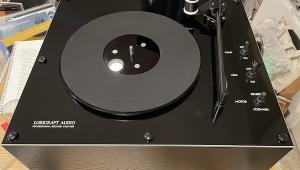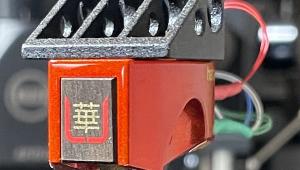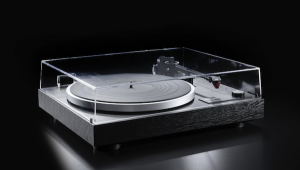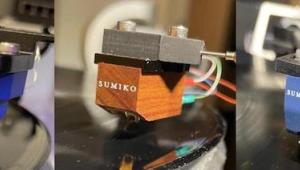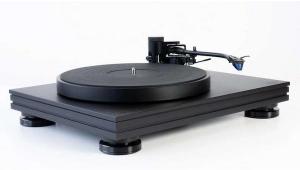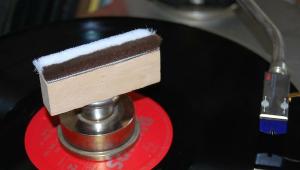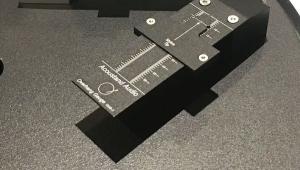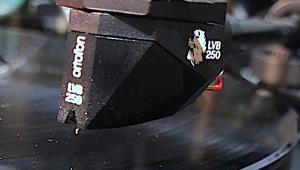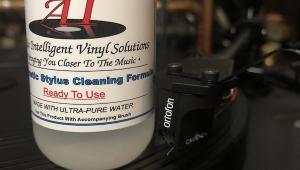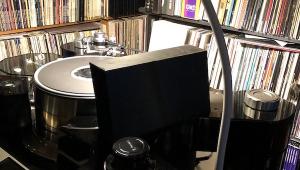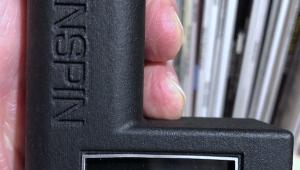Reite Audio PS-1 MC Phono Preamplifier and PSU-1 Power Supply
The unit with which I some time, didn’t impress in terms of build quality and though it sounded fine, I couldn’t understand the level of audiophile near-hysteria surrounding it. The company’s ability to reliably deliver has been questioned in many online threads and despite being in business for twenty years appears to be a not particularly communicative one man operation (readers are invited to argue otherwise).
Sadly, Mr. Sheftel, who had a Master of Music from Yale University and a long career as a Los Angeles studio musician (and who played lead trumpet throughout the musical “Hair”’s two year run at the Aquarius Theater), passed away late last winter just as Reite Audio’s engine was gathering steam, but Mr. Reite, who has an Associates Degree in Electronic Engineering Technology from Santa Monica City College, continues the operation.
The Reite Audio line includes the PS-1 phono preamp ($3900), the LS-1 line stage ($9200), the PA-100 100 watt monoblock amplifier ($17,000/pr), the PA-400 400 watt monoblock amplifier ($25,000/pr), the HP-1 headphone amplifier ($5500) and the PSU-1 power supply ($1900) that can simultaneously run both the phono preamplifier and the line stage. In other words, the PS-1 plus the PSU-1 power supply required to run it brings the phono preamp’s total price to $5800.
The entire product line features no reactive components in the signal path: no capacitors, chokes or transformers. Where caps are necessary as in the RIAA filter high quality mica, polypropylene or polycarbonate films capacitors are used. Particular attention is paid to heat dissipation.
Since Mr. Reite comes from a radio transmitting background, he claims he pays particular attention to power supply filtering. Each unit is burned in for 200 hours and tested to ensure that it meets published specifications and the results are included in the instruction manual (needless to say, the review sample met or exceeded all specs). The warranty is five year limited parts and labor.
These made in Exeter, Pennsylvania, USA products sold factory-direct are relatively expensive ($5500 for a factory direct headphone amp?) though not so for “state of the art” products. Are they SOTA? I can write only about the PS-1 and PSU-1.
The PS-1’s Specifications
Gain: 60dB
Noise:-79dBV (A weighted)
THD+N: 0.03% (400Hz)@1.0 volt RMS output.
RIAA accuracy: 0.2dB
Channel tracking: 0.1dB
Separation@1KHz:<=79dB
Weight (PS-1): 3 pounds
The Physical Plant
The PSU-1 power supply connects via a long multi-pin umbilical that makes possible flexible power supply placement well away from the signal handling PS-1.
Both the PSU-1 and PS-1 are housed in thin, folded and what appear to be painted sheet metal chassis, well-stiffened by attractive wooden side cheeks that also serve as “feet”. How thin is the chassis? Once the side braces are removed, the two folded pieces flex when gently handled. To be fair to the design, the visible chassis section is in one piece that wraps gracefully from front to back. I’m sure there’s a name for this sort of metal folding but I don’t know it.
It didn’t take long online to find very similar looking chassis, though the one shown there is structurally far more rigid than is the one Reite uses, which I’m fairly certain is also “pre-fabricated”.
Separate the two PS-1 chassis components and inside are two identical signal-processing circuit boards attached to the chassis bottom and another one containing a pair of dipswitches and associated resistive and capacitive loading components affixed to the chassis rear along with the hard-wired gold-plated WBT RCA input and output jacks.
The circuit boards are populated with what appear to be good quality low noise 1% (?) metalized film resistors. The two electrolytic caps do not appear to be bypassed with film or tantalum, which is often done in non-budget electronics. The op-amps are Burr-Brown OPA37 (first introduced in 1984), which are Texas Instruments' “high end” line (though that brings the cost to around $4.00 each).
The loading dipswitches and associated caps and resistors are sandwiched behind the circuit board so the quality and tolerances of the parts cannot be ascertained but the board’s proximity to the input jacks and the manner in which this is executed is very good. I’ve seen in some phono preamps cheap rotary switches to which are soldered equally poor quality resistors. Not so here.
Inside the power supply I found a rectifier block, an IEC A.C. input jack and a circuit board on which was a good quality, familiar-looking blue Amveco Magnetics toroidal transformer, 5% resistors and other standard fare power supply parts. Note that there are two multi-pin outputs as the PSU-1 is designed to power both the PS-1 and the Reite Audio preamplifier.
Reite Audio PS-1 Set-Up
Since the PS-1 is MC-only all that needed to be adjusted was the capacitive and resistive loading. Why adjustable capacitive loading? Given an MC cartridge’s ultra-low inductance, capacitive loading becomes almost a non-issue, though some MC cartridge manufacturers still specify capacitive loading.
With all dipswitches “off” the PS-1 gives you a sensible 1K resistive and (taking into account a typical phono cable’s built-in capacitance) 100pF capacitive loading. Reite offers 2 capacitive loading dip switches that used in combination can produce 100, 300, 500 and 700 pFs.
Resistive loading choices are generous, controlled via five dip switches that in combination can produce 10, 15, 19.6, 25, 30, 47.6, 60, 80, 90, 150, 200, 375 and with all switches off 1Kohms.
I placed the power supply well away from the signal-carrying unit and given the light weight (3 pounds) and relatively flimsy chassis construction, placed under the latter four Still Points.
What Matters Most: The Sound!
First up was the $5999 Transfiguration Proteus cartridge, a review of which will appear in the October issue of Stereophile. Let’s just say here for now wow! This cartridge outputs but .2mV and has an ultra-low internal impedance of 1 ohm. With 60dB of gain, the Reite Audio PS-1 should be able to do the job (though 64dB would have been better) but with what kind of accompanying noise? With the Proteus’s 1 ohm internal impedance 10 ohm loading (10x internal impedance) was a good starting point. If the sound was “closed down” I’d up it.
Given the -79dBV (A weighted) noise spec, I expected reasonably quiet backgrounds even with a .2mV cartridge and that’s what the PS-1 delivered though when the music stopped there was considerable audible background “rush”. However, with music playing it was not an issue, and certainly a .2mV cartridge is an unusual case. (I tried 90 and 150 ohm loading too with little improvement in background noise but the top end became [as expected] a bit over-pronounced). I actually really liked 90 ohms too, so open and grain-free was the PS-1's top end.
Beyond the less than black backgrounds in this case, the PS-1 produced startlingly better sound than I was expecting, having had a look “under the hood”. Bottom end extension was fully realized and “depth charge” robust. What better test than the just arrived TRON soundtrack (Audio Fidelity on clear blue vinyl (Audio Fidelity AFZLP2 177)? You could say I knew it well (review to be posted shortly).
The soundtrack’s stupendous bottom end weight (the Royal Albert Hall’s gargantuan organ for instance-and not playing “Louie, Louie”!) is finally on vinyl and the PS-1 expressed it with great authority and control. The score is punctuated with high frequency synthesizer “zings” that should sound transparent and crystalline. The cartridge can do it and so did the PS-1, which also managed to flesh out the midrange warmth of the UCLA chorus and particularly the delicate clarinet in “Anthem” on side four.
Switching to the Lyra Etna, which has a more generous .54mV output and a richer midrange, the background with no music playing was quieter and when the music played the sound produced by the combination was as rich and robust as hoped for.
I played the Analogue Productions “Living Stereo” reissue of “Lieutenant Kije”/”Song of the Nightingale” (RCA LSC-2150) (highly recommended) and though the lustrous string sheen and harmonic richness produced by the $34,000 reference Ypsilon were in shorter supply, in no way did the PS-1 sound “transistory” or “solid-state” or exhibit any distinctive sonic anomalies. I was left impressed by the PS-1’s transparency, dynamic capabilities, staging and every other audio checklist item you can think of.
On the “…Kije”, the triangle, tambourine, trumpet and string pizzicato on the “Troika” section Woody Allen used in his 1975 film “Love and Death” (which probably introduced the boomer generation to Prokofieff) was delivered with clarity, delicacy and an overall deft touch that one should expect at this price point.
Conclusion
Yes it’s the sound that ultimately counts and I don’t think anyone buying this $5800 phono preamp will be disappointed by the sound (though I don’t recommend it for use with .2mV output cartridges). However, I find it difficult to justify the asking price for a variety of reasons, starting with the thin, flimsy, off-the-shelf chassis. Looking inside, I cannot justify the $5800 asking price given that this product is sold “factory-direct”. There is no “middle-man” yet it seems as if the manufacturer is not passing along to you any savings.
$1900 for the power supply sold “factory direct”? That means were this to be sold at retail the power supply alone would cost at least $3800, with the total cost of the PS-1 plus PSU-1 being well over $10,000. I don’t see that at all. Please compare to this piece the parts and construction quality and the configurability options of the recently reviewed $2400 Swan Song Audio Cygnet also sold factory direct. On that basis there really is no comparison. And also please compare to the $2500 fully balanced LKV Phono 2-SB also sold "factory direct".
Sonically, in some ways the Swan Song/ Reite Audio comparison is apples to oranges: I asked for the Cygnet sample to be delivered with optional step-up transformers to achieve 69dB gain (it can be set to achieve up to 81dB of gain), which is useful for the Ortofon Anna and A90 as well as with the Transfiguration Proteus. The standard Cygnet with no transformer can be adjusted to reach 61dB gain and a fair comparison would have been to that version.
In terms of noise there’s no comparison: the Cygnet produces dead black backgrounds at an output level where the Reite Audio produces audible hiss, but in terms of transparency, stage width and depth and particularly bass extension, punch and bass transient attack, the Reite Audio PSU-1/PS-1 wins by a wide margin. The organ on the TRON soundtrack, which sounded so open and airy became closed down and mechanical, producing “bass” instead of a pipe organ pedal stop bass.
How much of the difference is caused by the transformers? I suspect a great deal. The Cygnet was rich and warm as the original review claimed, but that smothered much of the Proteus’s sonic greatness, particularly its exuberant dynamics and spectacular three dimensional imaging, which the Reite fully reproduced. The LKV's sound is closer to that of the Reite Audio (I no longer have it here to make a direct comparison) but at less than half the price.
So here’s what I conclude: Reite Audio designer Bob Reite is an extremely talented designer. Using mostly modest quality parts housed in generic, flimsy folded sheet metal chassis, he’s produced a superb sounding, exciting phono preamp that’s airy, spacious and delicate on top, full bodied on bottom and rich in the mids. Were you to hear it without seeing it, you might think it cost in excess of $5K. I found the sound superb regardless of price. Handling it and seeing its insides without hearing it, you might think $2000.
He’s chosen to sell it factory direct for $5800. Reite is entitled to sell it for whatever he wishes and I understand that R&D time and packaging (generic cut foam) need to be factored in as well as all of the cost of doing business and manufacturing a product etc. I get all of that.
But even considering all of that, while I hear a $5000+ product I don’t see one, which is a real shame because were he to price this commensurate with its stellar sound quality and its budget build quality it would be, like the LKV Phono 2-SB, a break-through product. Mr. Reite is welcome to post a response.

